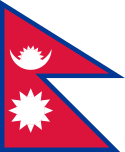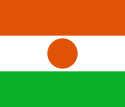Kraj rozwijający się

0.950 i powyżej 0.900–0.949 0.850–0.899 0.800–0.849 0.750–0.799 | 0.700–0.749 0.650–0.699 0.600–0.649 0.550–0.599 0.500–0.549 | 0.450–0.499 0.400–0.449 0.350–0.399 poniżej 0.350 niedostępne |
Kraj rozwijający się – termin określający kraj o niskim poziomie dóbr materialnych. Nie istnieje jednak ogólnie przyjęta definicja kraju rozwiniętego, a poziom rozwoju krajów rozwiniętych również może być zróżnicowany[1].
Niektóre organizacje, takie jak Bank Światowy, używają klasyfikacji numerycznej, traktując wszystkie kraje o niskim i średnim przychodzie jako rozwijające się. W najnowszej klasyfikacji gospodarki krajowe zostały podzielone według danych PKB per capita za 2008 rok – kraje o GNI per capita[a] poniżej 11 905 USD zostały zaliczone do krajów rozwijających się[2]. Inne instytucje używają mniej dokładnych definicji.
Kraje o rozwiniętej gospodarce, o których nie można jeszcze powiedzieć „kraje rozwinięte”, określane są jako „kraje nowo uprzemysłowione”[3][4][5][6].
Definicja
Kofi Annan, były sekretarz generalny Narodów Zjednoczonych zdefiniował kraje rozwinięte jako: A developed country is one that allows all its citizens to enjoy a free and healthy life in a safe environment (tłum: „Kraje rozwinięte to te, które pozwalają swoim obywatelom cieszyć się wolnością i zdrowiem w bezpiecznym otoczeniu”)[7].
Lecz według Departamentu Statystycznego Narodów Zjednoczonych nie ma ustalonych konwencji dla określenia rozwinięty czy rozwijający się w stosunku do krajów należących do ONZ[8].
Ponadto intencją używania określeń „rozwinięty” czy „rozwijający się” jest wyłącznie uzyskanie wygody w kontekście danych statystycznych; określenia te nie mają na celu wyrażania rzeczywistego poziomu rozwoju poszczególnych krajów[9]
W obiegowym rozumieniu Japonia, Kanada, Stany Zjednoczone, Australia, Nowa Zelandia oraz Europa są postrzegane jako regiony rozwinięte. W międzynarodowych statystykach dotyczących handlu: Południowoafrykańska unia celna oraz Izrael są postrzegane jako rozwinięte. Państwa powstałe z rozpadu Jugosławii, z wyjątkiem Słowenii, są postrzegane jako kraje rozwijające się, natomiast kraje Europy wschodniej oraz WNP nie są zaliczane ani do rozwiniętych ani rozwijających się regionów[10].
Przed kwietniem 2004 roku, MFW nie zaliczał krajów Europy wschodniej (w tym krajów Europy środkowej, które wciąż należą do Grupy wschodnioeuropejskiej w instytucjach ONZ), krajów byłego ZSRR w środkowej Azji (Kazachstan, Uzbekistan, Kirgistan, Tadżykistan i Turkmenistan) oraz Mongolii ani do regionów rozwiniętych ani rozwijających się, a określał je mianem kraje w czasie transformacji. Mimo to międzynarodowe raporty traktowały te państwa jako rozwijające się.
W XXI wieku cztery Azjatyckie tygrysy[11] (Hongkong[11][12], Singapur[11][12], Korea Południowa[11][12][13][14] i Tajwan[11][12]) zaczęły być postrzegane jako „rozwinięte” regiony, a kraje takie jak Cypr[12], Izrael[12], Malta[12] i Słowenia[12] jako „nowo rozwinięte kraje”.
Według Hansa Roslinga pojęcie krajów rozwijających się od lat 80. XX wieku stopniowo traci sens ze względu na zmniejszanie się różnic w oczekiwanej długości życia, dzietności i dochodach[15].
Lista krajów rozwijających się
Poniższe kraje zaliczane są przez Międzynarodowy Fundusz Walutowy do grupy „gospodarki wschodzące i rozwijające się” (ang. Emerging and Developing Economies)[16].
 Afganistan
Afganistan Albania
Albania Algieria
Algieria Angola
Angola Antigua i Barbuda
Antigua i Barbuda Arabia Saudyjska
Arabia Saudyjska Argentyna
Argentyna Armenia
Armenia Aruba
Aruba Azerbejdżan
Azerbejdżan Bahamy
Bahamy Bahrajn
Bahrajn Bangladesz
Bangladesz Barbados
Barbados Belize
Belize Benin
Benin Bhutan
Bhutan Białoruś
Białoruś Boliwia
Boliwia Bośnia i Hercegowina
Bośnia i Hercegowina Botswana
Botswana Brazylia
Brazylia Brunei
Brunei Bułgaria
Bułgaria Burkina Faso
Burkina Faso Burundi
Burundi Chile
Chile Chiny
Chiny Chorwacja
Chorwacja Czad
Czad Czarnogóra
Czarnogóra Demokratyczna Republika Konga
Demokratyczna Republika Konga Dominika
Dominika Dominikana
Dominikana Dżibuti
Dżibuti Egipt
Egipt Ekwador
Ekwador Erytrea
Erytrea Eswatini
Eswatini Etiopia
Etiopia Fidżi
Fidżi Filipiny
Filipiny Gabon
Gabon Gambia
Gambia Ghana
Ghana Grenada
Grenada Gruzja
Gruzja Gujana
Gujana Gwatemala
Gwatemala Gwinea
Gwinea Gwinea Bissau
Gwinea Bissau Gwinea Równikowa
Gwinea Równikowa Haiti
Haiti Honduras
Honduras Indie
Indie Indonezja
Indonezja Irak
Irak Iran
Iran Jamajka
Jamajka Jemen
Jemen Jordania
Jordania Kambodża
Kambodża Kamerun
Kamerun Katar
Katar Kazachstan
Kazachstan Kenia
Kenia Kirgistan
Kirgistan Kiribati
Kiribati Kolumbia
Kolumbia Komory
Komory Kongo
Kongo Kosowo
Kosowo Kostaryka
Kostaryka Kuwejt
Kuwejt Laos
Laos Lesotho
Lesotho Liban
Liban Liberia
Liberia Libia
Libia Macedonia Północna
Macedonia Północna Madagaskar
Madagaskar Malawi
Malawi Malediwy
Malediwy Malezja
Malezja Mali
Mali Maroko
Maroko Mauretania
Mauretania Mauritius
Mauritius Meksyk
Meksyk Mikronezja
Mikronezja Mjanma
Mjanma Mołdawia
Mołdawia Mongolia
Mongolia Mozambik
Mozambik Namibia
Namibia Nauru
Nauru Nepal
Nepal Niger
Niger Nigeria
Nigeria Nikaragua
Nikaragua Oman
Oman Pakistan
Pakistan Palau
Palau Panama
Panama Papua-Nowa Gwinea
Papua-Nowa Gwinea Paragwaj
Paragwaj Peru
Peru Polska
Polska Południowa Afryka
Południowa Afryka Republika Środkowoafrykańska
Republika Środkowoafrykańska Republika Zielonego Przylądka
Republika Zielonego Przylądka Rosja
Rosja Rumunia
Rumunia Rwanda
Rwanda Saint Kitts i Nevis
Saint Kitts i Nevis Saint Lucia
Saint Lucia Saint Vincent i Grenadyny
Saint Vincent i Grenadyny Salwador
Salwador Samoa
Samoa Senegal
Senegal Serbia
Serbia Seszele
Seszele Sierra Leone
Sierra Leone Somalia
Somalia Sri Lanka
Sri Lanka Sudan
Sudan Sudan Południowy
Sudan Południowy Surinam
Surinam Syria
Syria Tadżykistan
Tadżykistan Tajlandia
Tajlandia Tanzania
Tanzania Timor Wschodni
Timor Wschodni Togo
Togo Tonga
Tonga Trynidad i Tobago
Trynidad i Tobago Tunezja
Tunezja Turcja
Turcja Turkmenistan
Turkmenistan Tuvalu
Tuvalu Uganda
Uganda Ukraina
Ukraina Urugwaj
Urugwaj Uzbekistan
Uzbekistan Vanuatu
Vanuatu Wenezuela
Wenezuela Węgry
Węgry Wietnam
Wietnam Wybrzeże Kości Słoniowej
Wybrzeże Kości Słoniowej Wyspy Marshalla
Wyspy Marshalla Wyspy Salomona
Wyspy Salomona Wyspy Świętego Tomasza i Książęca
Wyspy Świętego Tomasza i Książęca Zambia
Zambia Zimbabwe
Zimbabwe Zjednoczone Emiraty Arabskie
Zjednoczone Emiraty Arabskie
Zobacz też
Uwagi
- ↑ Dochód narodowy brutto
Przypisy
- ↑ Arthur Sullivan, Steven M. Sheffrin, Economics: Principles in Action, Upper Saddle River, New Jersey: Prentice Hall, 2003, s. 471, ISBN 0-13-063085-3.
- ↑ Country Classification, Bank Światowy [dostęp 2010-02-24].
- ↑ Newly Industrialized Countries, [w:] Paweł Bożyk, Globalization and the Transformation of Foreign Economic Policy, Ashgate Publishing, Ltd, 2006, ISBN 0-75-464638-6.
- ↑ Multinationals, Ideology, and Organized Labor, [w:] Mauro F. Guillén, The Limits of Convergence, Princeton University Press, 2003, ISBN 0-69-111633-4.
- ↑ Manufacturing industries (rozdział 19), World development (rozdział 22), [w:] David Waugh, Geography, An Integrated Approach, wyd. 3, Nelson Thornes Ltd., 2000, 563, 576–579, 633 i 640, ISBN 0-17-444706-X.
- ↑ N. Gregory Mankiw, Principles of Economics, wyd. 4, 2007, ISBN 0-32-422472-9.
- ↑ United Nations Information Services, Press Release No. G/05/2000, 12 lutego 2000 [dostęp 2010-02-24] [zarchiwizowane z adresu 2009-08-08] (ang.).
- ↑ Composition of macro geographical (continental) regions, geographical sub-regions, and selected economic and other groupings (footnote C), Departament Statystyczny Narodów Zjednoczonych, 17 października 2008 [dostęp 2010-02-24] (ang.).
- ↑ Standard country or area codes and geographical regions for statistical use [dostęp 2010-02-24] (ang.).
- ↑ Composition of macro geographical (continental) regions, geographical sub-regions, and selected economic and other groupings (footnote C), Departament Statystyczny Narodów Zjednoczonych, 17 października 2008 [dostęp 2010-02-24].
- ↑ a b c d e Wschodnioazjatyckie tygrysy [dostęp 2010-02-24] [zarchiwizowane z adresu 2010-12-24] (ang.).
- ↑ a b c d e f g h IMF Advanced Economies List. World Economic Outlook, Database—WEO Groups and Aggregates Information,, kwiecień 2009 [dostęp 2010-02-10] (ang.).
- ↑ Country Specific Information [dostęp 2010-02-24] [zarchiwizowane z adresu 2010-06-17] (ang.).
- ↑ S. Korea wins developed country status [dostęp 2010-02-24] (ang.).
- ↑ Hans Rosling, TED Talk, TED, 2009.
- ↑ Country Composition of WEO Groups, imf.org, październik 2019 [dostęp 2021-06-09] (ang.).
Media użyte na tej stronie
Flag of Albania
The flag of Aruba
Łatwo można dodać ramkę naokoło tej grafiki
Łatwo można dodać ramkę naokoło tej grafiki
The national flag of the Democratic Republic of the Congo. Created according to the 2006 constitution : Son emblème est le drapeau bleu ciel, orné d’une étoile jaune dans le coin supérieur gauche et traversé en biais d’une bande rouge finement encadrée de jaune. (Its symbol is a sky blue flag, decorated with a yellow star in the upper left corner and crossed in the diagonal by a red strip with thin yellow borders) It seems to be identical, except for a lighter field hue, to the 1966–1971 flag.
Autor: See File history below for details., Licencja: CC0
The Flag of Dominica.
The flag of the Dominican Republic has a centered white cross that extends to the edges. This emblem is similar to the flag design and shows a bible, a cross of gold and 6 Dominican flags. There are branches of olive and palm around the shield and above on the ribbon is the motto "Dios,Patria!, Libertad" ("God, Country, Freedom") and to amiable freedom. The blue is said to stand for liberty, red for the fire and blood of the independence struggle and the white cross symbolized that God has not forgotten his people. "Republica Dominicana". The Dominican flag was designed by Juan Pablo Duarte, father of the national Independence of Dominican Republic. The first dominican flag was sewn by a young lady named Concepción Bona, who lived across the street of El Baluarte, monument where the patriots gathered to fight for the independence, the night of February 27th, 1844. Concepción Bona was helped by her first cousin María de Jesús Pina.
Made by author of Xramp, first uploaded by Denelson83 as Flag of Ecuador.svg, modifications by Husunqu.
Flag of Ethiopia
The national and official state flag of Haiti; arms obtained from http://www.webchantier.com/. The civil flag can be found at here.
The Flag of India. The colours are saffron, white and green. The navy blue wheel in the center of the flag has a diameter approximately the width of the white band and is called Ashoka's Dharma Chakra, with 24 spokes (after Ashoka, the Great). Each spoke depicts one hour of the day, portraying the prevalence of righteousness all 24 hours of it.
bendera Indonesia
Flag of Jamaica. “The sunshine, the land is green, and the people are strong and bold” is the symbolism of the colours of the flag. GOLD represents the natural wealth and beauty of sunlight; GREEN represents hope and agricultural resources; BLACK represents the strength and creativity of the people. The original symbolism, however, was "Hardships there are, but the land is green, and the sun shineth", where BLACK represented the hardships being faced.
Flag of Laos
Flag of Maldives. The colours used are Pantone 186 C for red and Pantone 348 C for green.
Flag of Mauritania, adopted in 2017. The National Assembly added red stripes to the top and bottom edges to represent “the blood shed by the martyrs of independence”.
Flag of Namibia
The national flag of Nauru. Official Pantone colours are: PMS 280 blue, PMS 123 yellow.
Please do not replace the simplified code by a version created with Inkscape or another vector graphics editor❗
The proportions of this flag are 3:2; however, there is no official definition for the correct proportions and also 5:3 is widely used.
Flag of Rwanda. The flag ratio is 2:3 with the stripes being 2:1:1. Colors are the following officially: Pantone 299 C 2X (blue), RAL 6029 (green), RAL 1023 (yellow) and RAL 1003 (golden yellow). (As of 03/08/2010, the only color used is the Pantone 299 C, which is from here. The rest of the colors are RAL shades from here.)
Flag of Senegal
Flag of South Sudan (originally of the Sudan People's Liberation Army/Movement)
Łatwo można dodać ramkę naokoło tej grafiki
The national flag of Kingdom of Thailand since September 2017; there are total of 3 colours:
- Red represents the blood spilt to protect Thailand’s independence and often more simply described as representing the nation.
- White represents the religion of Buddhism, the predominant religion of the nation
- Blue represents the monarchy of the nation, which is recognised as the centre of Thai hearts.
Autor: Nightstallion (original)
Zscout370 (most recent), Licencja: CC0
Flag of Tuvalu.
Flag of the Ivory Coast, written by Jon Harald Søby, modified by Zscout370. The colors match to what is reported at http://fotw.vexillum.com/flags/ci.html.
Flag of São Tomé and Príncipe
The United Nations Human Development Index (HDI) rankings for 2009. For full details, see List of countries by Human Development Index (en.wikipedia)
|
0.950 and over
0.900–0.949
0.850–0.899
0.800–0.849
0.750–0.799
|
0.700–0.749
0.650–0.699
0.600–0.649
0.550–0.599
0.500–0.549
|
0.450–0.499
0.400–0.449
0.350–0.399
under 0.350
Data unavailable
|
Autor: Alex Covarrubias, Licencja: CC BY-SA 3.0
Newly industrialized countries





























































































































































